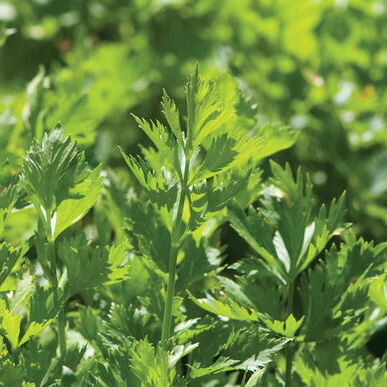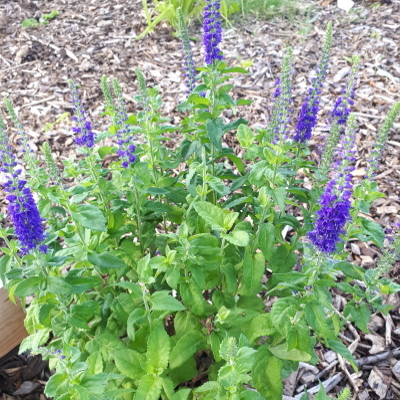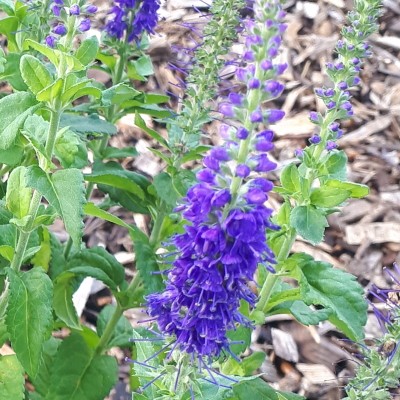Leafy herb with bold celery flavor. Easier to grow than standard celery. A versatile ingredient for salads, soups, stews, and vegetable medleys. More intense flavour (both fresh and dried) than garden celery.
-
-
Out of stock
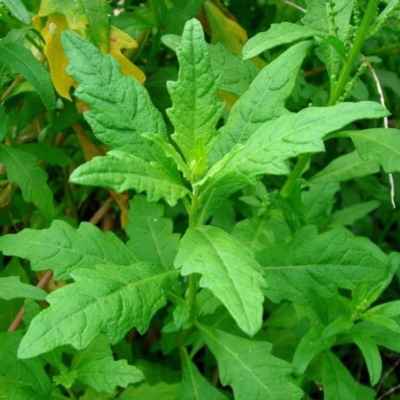
This annual Mexican herb has a pungent aroma, spear-shaped, deeply toothed leaves, and green flowers. It is also known as Wormseed, American Wormseed, Mexican Tea or Herba Sancti Mariae. Epazote's (eh-pah-ZOH-teh) fragrance is strong and pungent. It has been compared to citrus, petroleum, savory, mint, or camphor. It smells pretty strong, but we have found that it does add a wonderful depth of flavor to a pot of beans! With its strong taste and aroma, not everyone takes to it right away, but used as a spice, it adds a wonderful rustic layer of flavor to many Mexican and Latin American dishes, giving them an extra dimension of flavor that just can’t be replicated with any other herb – very similar to the “umami” flavors of fermented Asian ingredients. Epazote leaves are used for their pungent flavor and aroma to season soup, corn, beans, and shellfish in Mexico. It is used in beans to prevent flatulence. It is also brewed for "Jesuit Tea" but the herb's main use is to expel intestinal worms from humans and animals. Oil of chenopodium is derived from this plan.
-
Out of stock
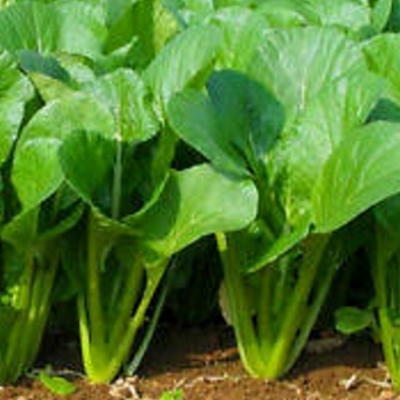
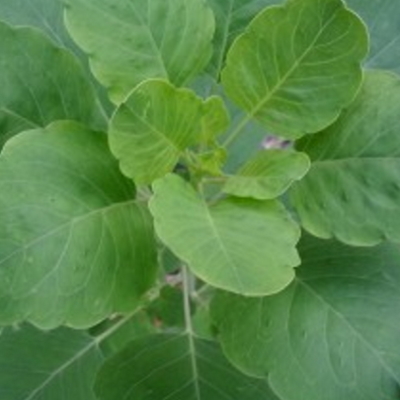
Ethiopian Kale matures in 40 days. Technically, a Mustard, Ethiopian Kale is an unusual leafy green. The hearty leaves have a very complex flavor with overtones of spice and garlic. Great for picking at the baby size in under 3 weeks, or waiting for fully grown leaves. Ethiopian Kale works great makes delicious salad mix, standalone raw, or lightly cooked. An extra cold-tolerant and drought-resistant crop. If you're going to try only one new green this year, Ethiopian Kale should be your first choice.
-
Out of stock
 This delightful Japanese Catmint has many merits. Both the foliage and the flowers are fragrant. It blooms the first year from seed, unlike most perennials. It is upright and nicely branched, rather than sprawling. Make it a centerpiece of your containers and sunny-to-partly-shaded garden areas! Panther Dark Blue walked off with the Bronze Medal at Holland's prestigious Plantarium competition in 2015. The attractive little plant is much more compact than other catmint species, standing just 20 cm high and 25 cm wide. The foliage is bright green, glossy, and toothed, releasing a strong, heavenly fragrance from spring through fall. Profuse bloomer! Medium to dark blue, these tubular flowers reach up to 5 cm long, held in nice clusters on the top of the plant. The blossoms are fragrant, and they begin in early summer and go right through into early fall. You'll be amazed by the flower power of this petite plant.
This delightful Japanese Catmint has many merits. Both the foliage and the flowers are fragrant. It blooms the first year from seed, unlike most perennials. It is upright and nicely branched, rather than sprawling. Make it a centerpiece of your containers and sunny-to-partly-shaded garden areas! Panther Dark Blue walked off with the Bronze Medal at Holland's prestigious Plantarium competition in 2015. The attractive little plant is much more compact than other catmint species, standing just 20 cm high and 25 cm wide. The foliage is bright green, glossy, and toothed, releasing a strong, heavenly fragrance from spring through fall. Profuse bloomer! Medium to dark blue, these tubular flowers reach up to 5 cm long, held in nice clusters on the top of the plant. The blossoms are fragrant, and they begin in early summer and go right through into early fall. You'll be amazed by the flower power of this petite plant. -
-
Out of stock
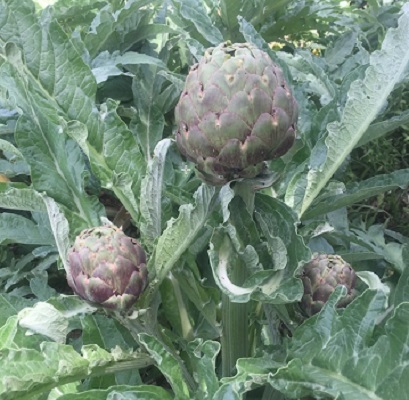
 Start seed indoors in a soil-less mix 8-12 weeks before the last frost date in your area. Sow the seed 6 mm (1/4″) deep and germinate at 21-26 C (70-80 F). When seedlings are 2.5-5 cm (1-2″) high transplant to individual 10 cm (4″) pots and grow on at 15-21 C. Harden off and transplant to the garden after the threat of frost has passed. Artichoke does best in full sun with a deep, organic, fertile soil. Space plants 60-90 cm (24-36″) apart in the row with rows 1.75 m (6′) apart. Keep plants evenly watered and mulch the soil to help preserve soil moisture and keep the soil from becoming too warm in summer. If the soil does become too warm, it can trigger a summer dormant period. Start with a thin layer of mulch and build it up to 10 cm (4″) thick as the plants grow.
Start seed indoors in a soil-less mix 8-12 weeks before the last frost date in your area. Sow the seed 6 mm (1/4″) deep and germinate at 21-26 C (70-80 F). When seedlings are 2.5-5 cm (1-2″) high transplant to individual 10 cm (4″) pots and grow on at 15-21 C. Harden off and transplant to the garden after the threat of frost has passed. Artichoke does best in full sun with a deep, organic, fertile soil. Space plants 60-90 cm (24-36″) apart in the row with rows 1.75 m (6′) apart. Keep plants evenly watered and mulch the soil to help preserve soil moisture and keep the soil from becoming too warm in summer. If the soil does become too warm, it can trigger a summer dormant period. Start with a thin layer of mulch and build it up to 10 cm (4″) thick as the plants grow. -
Out of stock
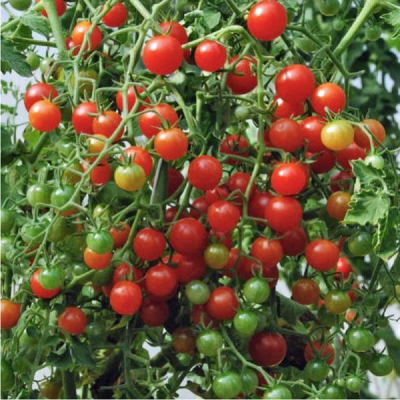 Red Currant plants produce copious quantities of small 1 cm, deep red tomatoes that are exceptionally sweet and packed with flavour. They typically require around 75 days to reach maturity, and make a good choice for containers and hanging baskets, though they are indeterminate growers. Currant tomatoes are native of Peru and Brazil. It was illustrated by Louis Feuille in 1725 Perfect for snacking tomatoes directly from the garden. Great for summer salads. Fruits from early summer until fall frost. Each plant produces 1000's of tiny tomatoes. Best for hanging baskets.
Red Currant plants produce copious quantities of small 1 cm, deep red tomatoes that are exceptionally sweet and packed with flavour. They typically require around 75 days to reach maturity, and make a good choice for containers and hanging baskets, though they are indeterminate growers. Currant tomatoes are native of Peru and Brazil. It was illustrated by Louis Feuille in 1725 Perfect for snacking tomatoes directly from the garden. Great for summer salads. Fruits from early summer until fall frost. Each plant produces 1000's of tiny tomatoes. Best for hanging baskets.
